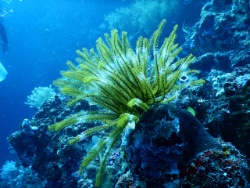Cablegate: Dominican Politics #18: John Paul Ii and The
This record is a partial extract of the original cable. The full text of the original cable is not available.
UNCLAS SANTO DOMINGO 001873
SIPDIS
SENSITIVE
DEPT FOR WHA/CAR, INR
E.O. 12958: N/A
TAGS: PGOV PREL DR
SUBJECT: DOMINICAN POLITICS #18: JOHN PAUL II AND THE
DOMINICAN REPUBLIC
1. (SBU) Following is #18 in our series on Dominican
politics:
JOHN PAUL II AND THE DOMINICAN REPUBLIC
The death of John Paul II has brought no great outpouring of
grief in the Dominican Republic, although this is nominally a
Catholic nation tied by special Concordat with the Vatican.
Many major churches, including the National Cathedral,
remained closed as the Pope was dying.
The principal event to remember the Pope was a mass presided
by Cardinal Manuel de Jesus Lopez Rodriguez in the National
Cathedral. Conspicuously absent from these events was
Fernandez, who was represented by Vice President Rafael
Alburquerque. Unlike past president Hipolito Mejia, a devout
Catholic who attended the mass, Fernandez is not a practicing
Catholic. He did declare three days of national mourning,
with the Dominican flag to be flown at half-mast, he issued
a public statement of condolence and signed the book at the
Nuncio's residence. Hipolito Mejia had canceled political
activities because of the illness of John Paul II and the
rest of the opposition PRD suspended political activities
subsequently for the 3 days of mourning. Dominicans will be
represented in Rome by First Lady Margarita Cedeno de
Fernandez, Secretary of Education Alejandrina German, and the
Dominican Ambassador to the Holy See, Rafael Marion Landais.
Perhaps the most eloquent tribute to John Paul II was the
full-page statement placed in at least one paper by House of
Representatives President Alfredo Pacheco, who wrote of his
defense of human rights and his ecumenical reach to those
beyond the Catholic Church.
The events leading up to and immediately following the
Pope,s death were covered extensively by the local press.
Many stories recalled the 3 visits that Pope John Paul II
made to the Dominican Republic, most recently for Balaguer,s
1992 celebration of the 500th anniversary of the discovery of
the Americas. That event was an extravaganza of waste,
featuring the construction of a mammoth concrete "Columbus
Lighthouse" in Santo Domingo, which has never functioned.
Papers have focused on the possibility that the next Pope
could be from Latin America, going so far as to speculate
about the prospects of Cardinal Manuel de Jesus Lopez
Rodriguez, a vigorous 63-year old who has served more than 20
years in the position of "first prelate of the Americas."
One paper listed Lopez Rodriguez first among twelve
candidates, something sure to sell a few papers at home;
however, this was just rooting for the home team. Although
vigorous in health and outspoken on principles of morality,
Lopez Rodriguez has shown little initiative in taking on
individuals, officials, or the comfortably paternalistic
Dominican political system. He has demonstrated no great
intellectual or administrative ability and has often come
across as pompous. For instance, after additional security
measures were placed at the international airport last year,
Lopez Rodriguez refused to remove his shoes or belt at the
checkpoint, asserting, "Everyone knows who I am." As a moral
leader he gave exactly the wrong signal to a society that
should be sensitized to the need to support security
measures.
Lopez Rodriguez has reacted to journalistic speculation about
his chances for the papacy by commenting that these
statements are only conjectures and that the Holy Spirit will
guide the College of Cardinals in the choice. The Cardinal
did point out that Latin America, with 500 million baptized,
is the continent with the highest number of Catholics.
2. (U) Drafted by Michael Meigs and Sheena Stevens.
3. (U) This and other articles in the series can be
consulted at our SIPR website,
http://www.state.sgov.gov/p/wha/santodomingo< /a> along with
extensive other material.
HERTELL


 Global Jews for Palestine: Jewish Organisations' Passover Statement, After 40 Days Of Starvation
Global Jews for Palestine: Jewish Organisations' Passover Statement, After 40 Days Of Starvation APEC: Stronger Immunization Policies Needed As Vaccine Confidence Falls
APEC: Stronger Immunization Policies Needed As Vaccine Confidence Falls 350.org: Indigenous Groups From The Pacific, Brazil & Canada Hand Demands To COP30 Presidency To End Fossil Fuels
350.org: Indigenous Groups From The Pacific, Brazil & Canada Hand Demands To COP30 Presidency To End Fossil Fuels Conservation International: Conservation International Expedition Reveals Ecosystem Recovery In Tokelau
Conservation International: Conservation International Expedition Reveals Ecosystem Recovery In Tokelau UN Special Procedures - Human Rights: UN Expert Urges States To Finance Inclusive And Sustainable Development, Not A War Economy
UN Special Procedures - Human Rights: UN Expert Urges States To Finance Inclusive And Sustainable Development, Not A War Economy Amnesty International Aotearoa NZ: Global - Recorded Executions Highest Since 2015
Amnesty International Aotearoa NZ: Global - Recorded Executions Highest Since 2015